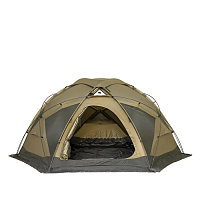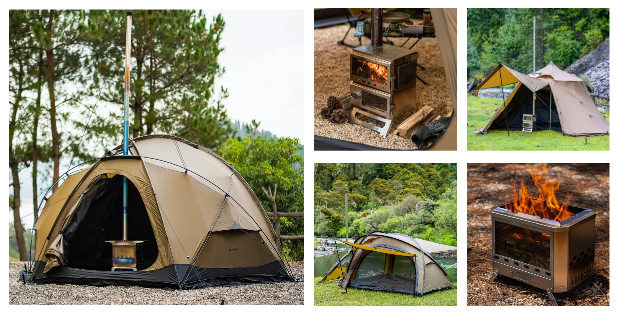Cart
Winter Camping Basics: From Rookie to Master
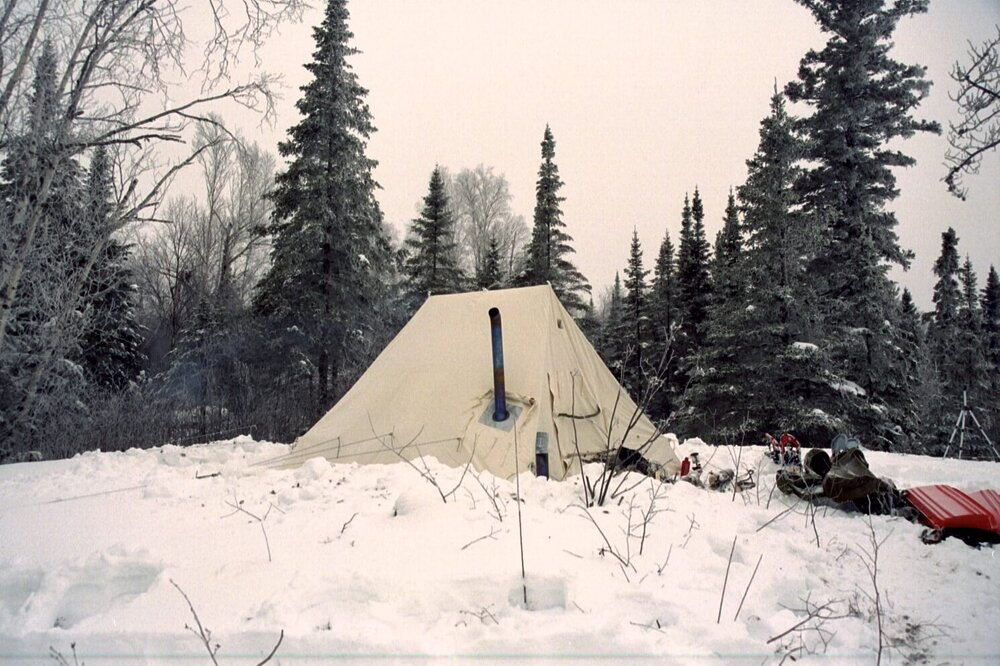
As the snow-covered landscapes beckon adventure enthusiasts, it's essential to equip yourself with the knowledge and skills necessary to thrive in the cold winter wilderness. Whether you're a beginner looking to embark on your first winter camping trip or an experienced camper seeking to refine your skills, this blog is designed to provide you with valuable insights and practical tips that will elevate your winter camping experience.
1. Essential Gear for Winter Camping
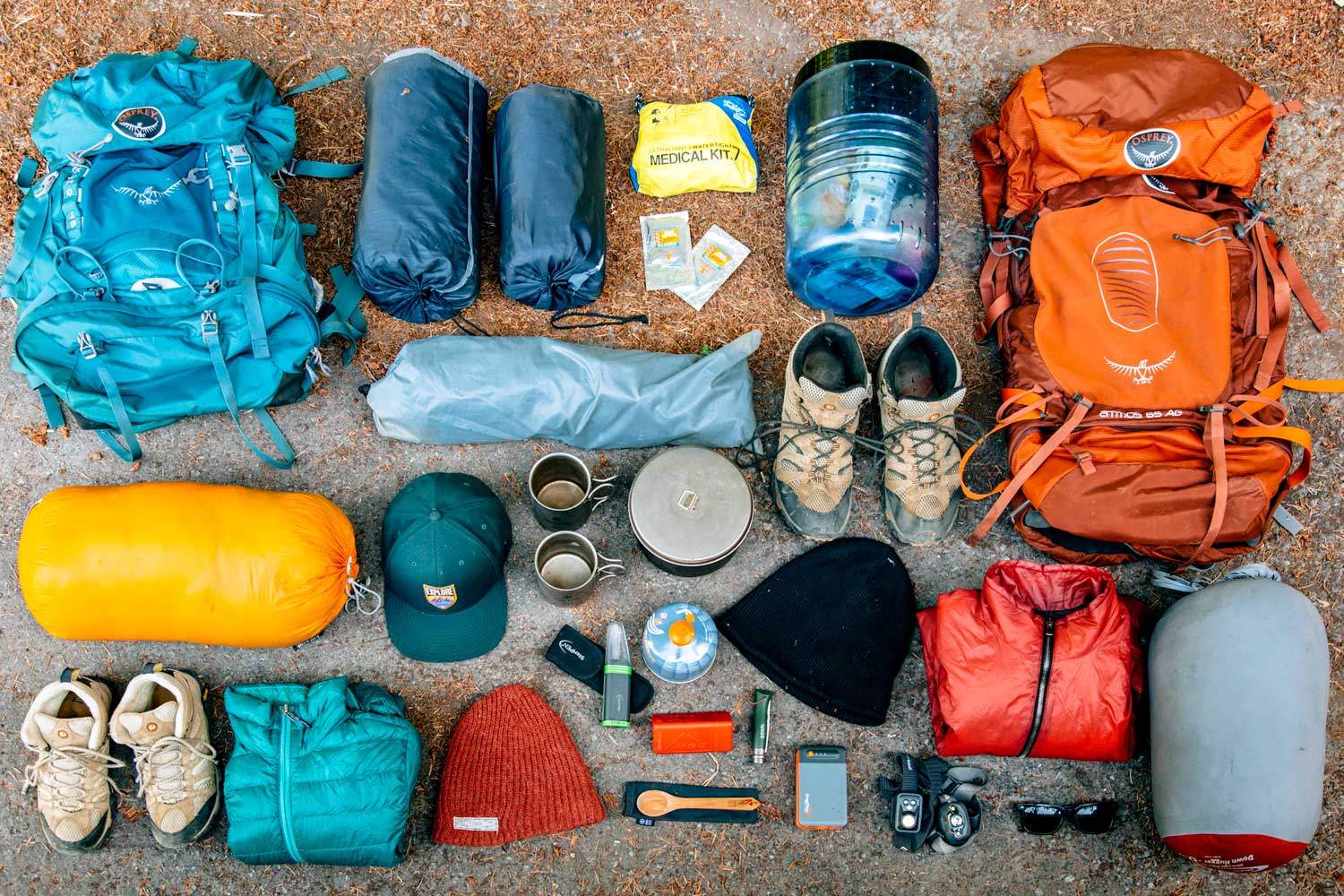
When venturing into the winter wilderness, having the right gear can make all the difference in ensuring your safety, comfort, and enjoyment. In this section, we will explore the essential gear you need for a successful winter camping experience.
-
Clothing and Layering
In cold weather, proper clothing and layering are crucial for maintaining warmth and protecting yourself from the elements. Begin with a moisture-wicking base layer that keeps perspiration away from your skin. Add insulating layers, such as fleece or down jackets, to trap heat. Finally, top it off with a waterproof and windproof outer shell to shield yourself from snow, wind, and rain.
-
Sleeping Gear
A quality sleeping bag designed for winter conditions is essential for a restful night's sleep. Look for a bag with a temperature rating suitable for the coldest temperatures you expect to encounter. Additionally, invest in an insulated sleeping pad to provide insulation between your body and the cold ground, preventing heat loss.
-
Shelter Options
2.Campsite Selection and Setup in Winter Camping
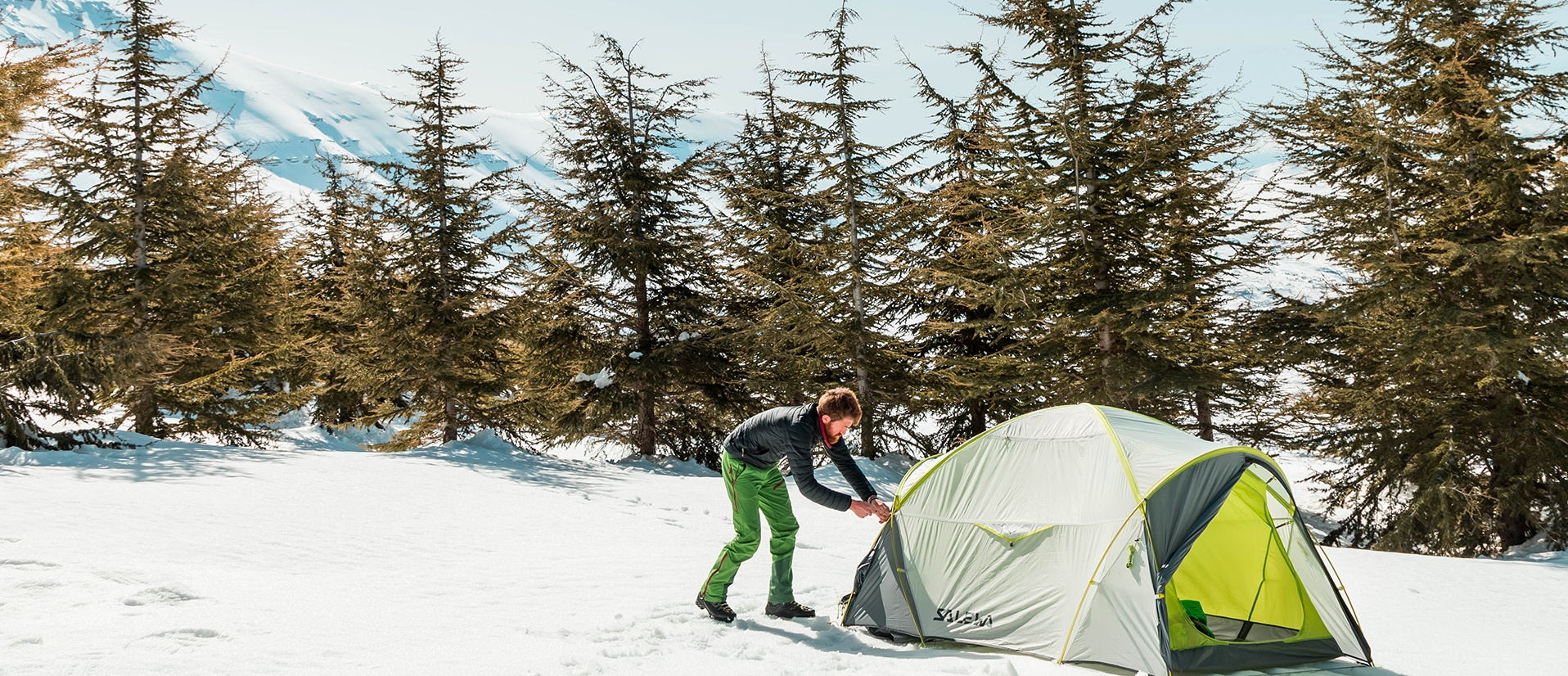
Selecting the right campsite and setting it up correctly are vital aspects of a successful winter camping experience. In this section, we will guide you through the considerations for choosing a suitable location and provide tips for setting up your campsite effectively.
-
Choosing a Suitable Location
When selecting a campsite in winter, several factors come into play. Look for a location that offers shelter from strong winds, as they can significantly impact your comfort and safety. Avoid areas prone to avalanches or areas with overhanging snow-loaded trees, as they pose potential hazards. Additionally, consider the proximity of water sources and natural features, such as hills or trees, that can provide additional protection from the elements.
-
Setting Up Your Tent or Hot Tent
Proper setup of your shelter is crucial to withstand winter conditions. Before setting up, clear the ground of snow, ensuring a flat and stable surface. Stake down your tent securely, paying attention to using snow stakes or anchors designed for winter camping. Ensure the rainfly or tent vestibule is properly deployed to protect against snow and wind. If using a hot tent, follow the manufacturer's instructions for setting up the stove and ensuring proper ventilation.
-
Campfire and Cooking Setup
Building a campfire in winter requires extra precautions and considerations. Look for an appropriate location for your fire, away from overhanging branches and combustible materials. Clear the area from snow and create a barrier using rocks or a fire-resistant mat to prevent the fire from spreading. Keep in mind the availability of firewood and the importance of collecting it before darkness falls.
3.Safety Considerations in Winter Camping
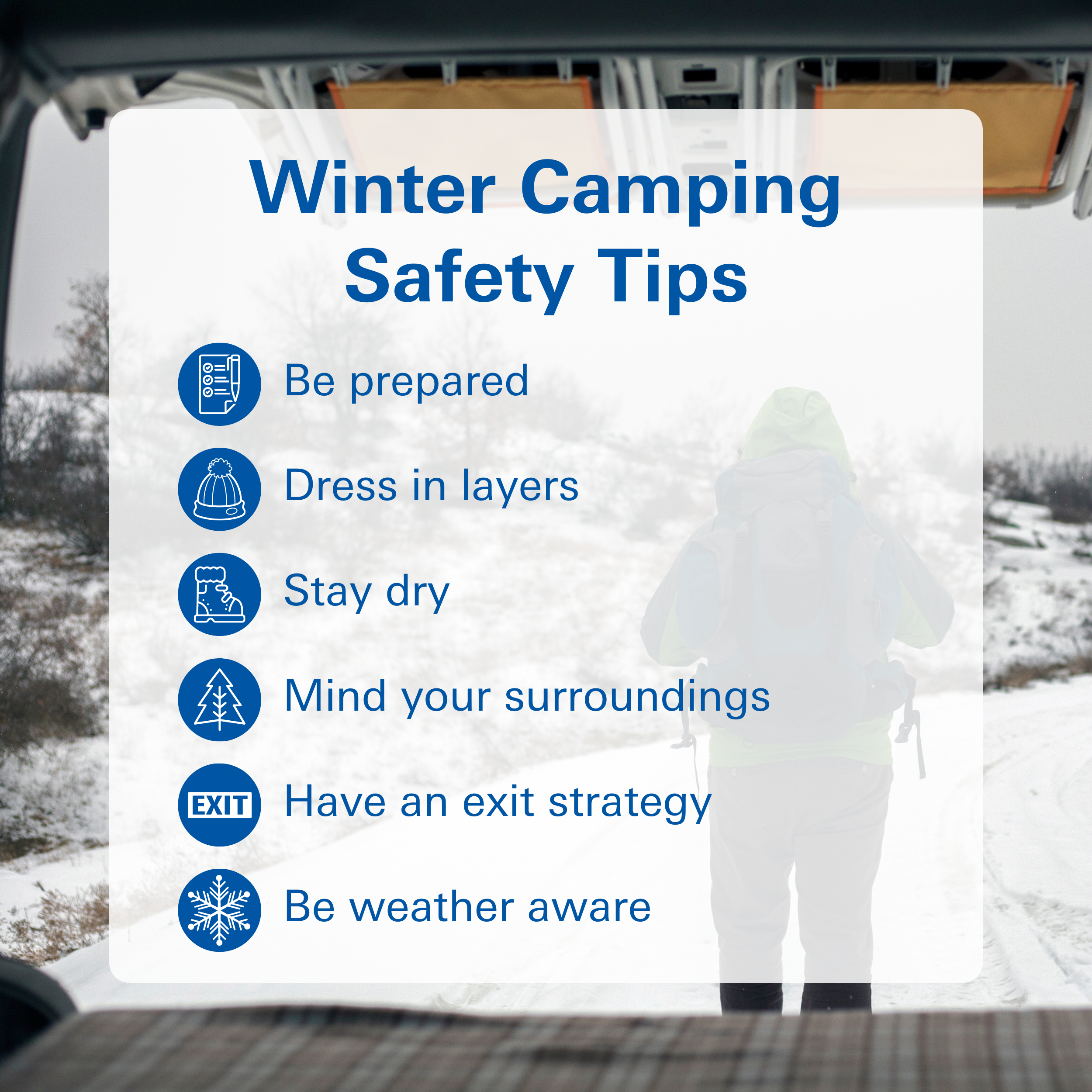
When venturing into the winter wilderness, prioritizing safety is paramount. Cold temperatures, challenging terrain, and potential hazards require careful preparation and adherence to safety protocols. In this section, we will explore important safety considerations to ensure your well-being during your winter camping adventure.
-
Cold Weather Exposure Prevention
Preventing cold weather-related injuries, such as hypothermia and frostbite, is crucial. Dress in layers, ensuring proper insulation and moisture management. Be mindful of exposed skin and extremities, using protective measures like hats, gloves, and face masks. Stay hydrated and nourished, as dehydration and malnutrition can increase the risk of cold-related illnesses.
Navigating in winter conditions poses unique challenges. Carry maps, compasses, and GPS devices to aid in navigation. Familiarize yourself with the terrain and landmarks before embarking on your journey. Be cautious of snow-covered trails or the risk of getting disoriented in whiteout conditions. Consider learning basic orienteering techniques or enrolling in a winter navigation course to enhance your skills.
-
Avalanche Awareness
If camping in mountainous regions, understanding avalanche risks and safety protocols is crucial. Educate yourself on avalanche terrain, snow stability assessment, and proper travel techniques. Carry essential avalanche safety equipment, including a beacon, shovel, and probe. Additionally, check local avalanche forecasts and consult with experienced mountaineers or avalanche professionals for up-to-date information.
-
Emergency Preparedness
Prepare for unexpected situations by carrying a well-stocked winter camping first aid kit. Include essential items such as bandages, pain relievers, and cold weather-specific supplies. Familiarize yourself with common winter camping injuries and their treatment. Additionally, have a communication plan in place, including emergency contact information and a means of signaling for help, such as a whistle or mirror.
4.Food and Hydration in Winter camping
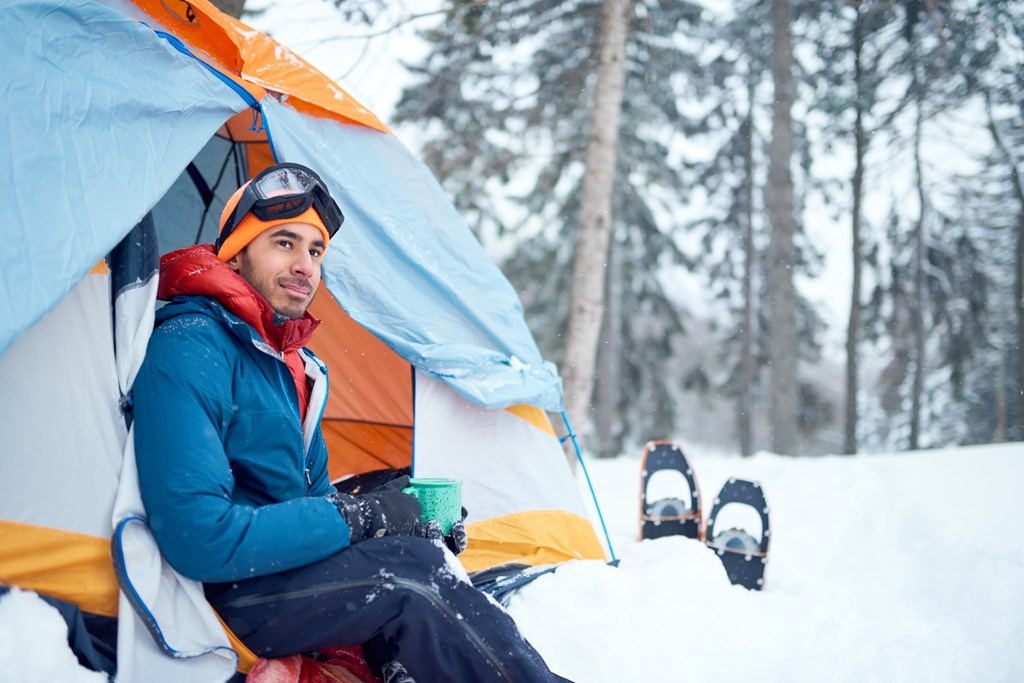
Proper nutrition and hydration are crucial for maintaining energy, warmth, and overall well-being during winter camping adventures. In this section, we will explore important considerations for food and hydration in cold weather conditions.
-
Meal Planning and Preparation
Plan your meals in advance and pack them in waterproof, airtight containers to prevent spoilage or contamination. Consider using insulated food containers or thermoses to keep hot meals warm for longer periods. Don't forget to bring essential cooking utensils, such as a lightweight stove, pot, and utensils suitable for cold weather use.
-
Water Sources and Treatment
5.Winter Camping Tips and Tricks
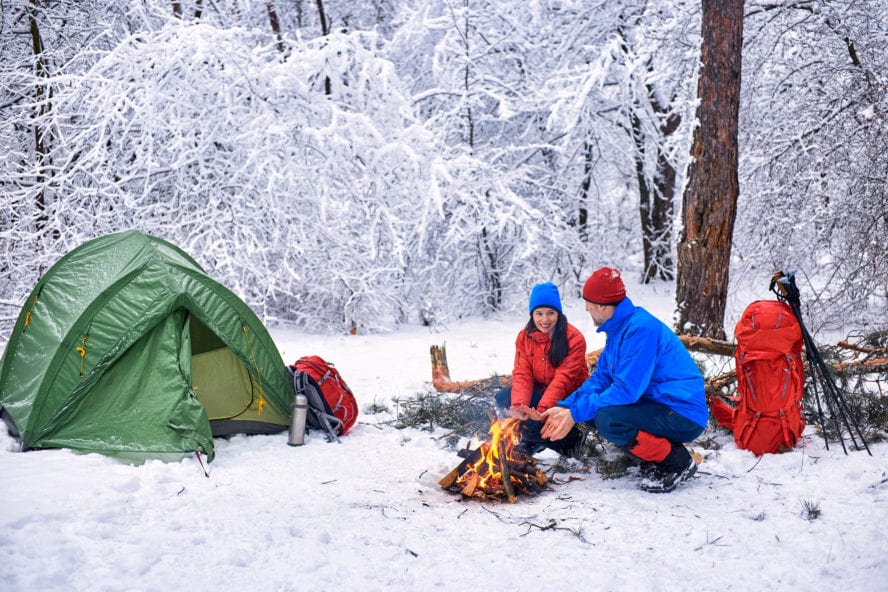
Mastering the art of winter camping requires a combination of knowledge, experience, and a few tried-and-true techniques. In this section, we will share valuable tips and tricks to help you stay warm, comfortable, and prepared during your winter camping adventures.
-
Staying Warm at Night
Sleeping comfortably in cold temperatures is essential for a restful night's sleep. Prior to settling in, warm up your sleeping bag by doing a few jumping jacks or brisk exercises. Use a sleeping bag liner or additional blankets for added insulation. Place a hot water bottle at the foot of your sleeping bag to provide extra warmth throughout the night. Ensure your sleeping pad is well-insulated to prevent heat loss from the ground.
-
Managing Condensation
Condensation can be a challenge in winter camping due to the temperature differences between the warm interior and the cold exterior of your shelter. To minimize condensation, maintain proper ventilation by slightly opening vents or using a chimney vent in hot tents. Avoid excessive moisture buildup by drying wet clothing and gear outside or in a designated vestibule area.
-
Winter Gear Maintenance
Conclusion
Now, we encourage you to embark on your winter camping journey. Embrace the breathtaking beauty of snow-covered landscapes, the tranquility of winter solitude, and the sense of accomplishment that comes with conquering the challenges of cold weather camping.
Stay warm, stay safe, and enjoy your winter camping journey to the fullest!
- Contact Us
-

About Pomoly
Pomoly is a leading camping brand specializing in hot tents and tent stoves. We are camping life explorer, Follow Page / Join Group, let's make camping enjoyful together!
Working Hours
Mon-Fri, 09:00 - 17:00

- Company Info
- NEWS
- About us
- Pomoly Name
- Leave-No-Trace
- Contact Now
- Facebook Group
- YouTube Learning
- Product News
- Contact Us
- Topic Collections
- Policies & Terms
- Payment Policy
- Shipping Policy
- Return & Refund
- Privacy Policy
- Terms of Use
- Tax Policy
- Website Disclaimer
- Safety Disclaimer
- Warranty Policy
- Promotion Policy
- Pre-order Policy
- INTELLECTUAL PROPERTY RIGHTS
- Dealers Agreement And Terms
- Become Affiliate
- User Center
- Forget Password
- My Orders
- Tracking Order
- My Account
- Register
- Popular Searches
-
Tipi Tents Dome Tents Camping Tent Hammock Stove Camping Camping Pellet Stove Circle 6 Titanium Water TankDome X Locomotive 20 LEO 2 camping tent T-Brick 2.0 T1 2.0 tent stove Dweller wood stove Oroqen 2.0 Chimney Water Tank Lumberjack STOVEHUT Bromance 70 Tipi Pomoly Coupon Baker Oven Stove Titanium elbow Fire Pits Tent Stove titanium Stove Outdoor Pellet Stove
keebon pellet stove
